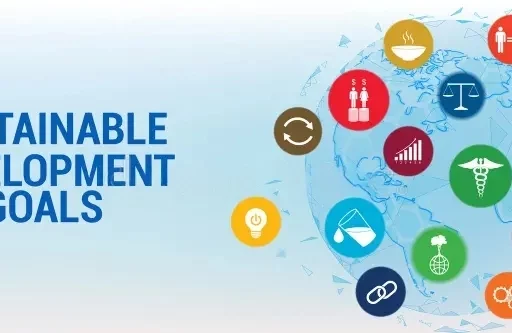The intersection of sustainability and digital transformation has emerged as a key area of focus for businesses looking to spur expansion while maintaining long-term environmental and social responsibility in today’s quickly changing business climate. This blog article investigates how the convergence of these two tremendous forces is influencing the future of business and why organizations must embrace this synergy in order to remain competitive. From exploiting cutting-edge technology to promote sustainable practices to recognizing the problems and possibilities that occur as a result of this convergence, this thorough guide will give vital insights for organizations seeking to navigate the complexity of today’s environment.
Understanding the Intersection of Sustainability and Digital Transformation
People frequently consider sustainability and digital transformation as separate endeavors, but they are becoming increasingly linked as firms recognize the importance of incorporating environmental, social, and governance (ESG) factors into their digital strategies. Sustainability refers to a system’s ability to persist throughout time, which includes environmental, social, and economic components. Digital transformation, on the other hand, refers to the use of digital technology to fundamentally alter how firms function and provide value to consumers. When these two principles come together, organizations may use technology to increase sustainability, improve efficiency, and generate value for all stakeholders.
At the heart of this junction is the belief that digital transformation may serve as a catalyst for long-term development. Artificial intelligence (AI), the Internet of Things (IoT), and blockchain technologies enable businesses to monitor and decrease their environmental effect, optimize resource utilization, and improve supply chain transparency. This not only helps organizations accomplish their sustainability goals, but it also gives them a competitive advantage in a market where consumers and investors are increasingly valuing ESG performance.
The Role of Technology in Promoting Sustainability
The impact of technology in promoting sustainability cannot be emphasized. Digital tools and platforms enable enterprises to more effectively analyze their environmental impact, make data-driven choices, and implement sustainable practices on a large scale. For example, IoT devices may monitor energy use in real time, enabling businesses to uncover inefficiencies and minimize their carbon impact. AI may improve supply chains by better forecasting demand, minimizing waste, and ensuring proper use of resources.
Furthermore, blockchain technology is improving supply chain transparency by creating a tamper-proof record of each transaction. This guarantees that all stakeholders, including consumers and authorities, can verify the origin and sustainability of products. This kind of transparency is critical for developing confidence and holding firms responsible for their environmental and social consequences.
Furthermore, digital tools such as Fherist are helping organizations manage the challenges of sustainable reporting and corporate transparency. Fherist offers a full ecosystem for firms to analyze, disclose, and improve their ESG performance, fostering a culture of openness and accountability that is critical for long-term prosperity.

Benefits of Integrating Sustainability and Digital Transformation
Combining sustainability with digital transformation provides various benefits for firms, including cost savings and improved brand recognition. One of the most significant benefits is the possibility for improved operational efficiency. Businesses may use digital technology to expedite operations, decrease waste, and lessen their environmental effect. For example, digital technologies may optimize energy use, cut water use, and eliminate material waste, resulting in considerable cost savings.
Another significant advantage is the capacity to fulfill the increasing demands of consumers and investors for openness and accountability. In today’s market, customers are increasingly basing their purchase decisions on a company’s ESG performance. Companies that incorporate sustainability into their digital transformation initiatives may deliver the openness that consumers need, therefore increasing trust and loyalty.
Furthermore, organizations that effectively mix sustainability and digital transformation position themselves better to innovate and outperform their competitors. Digital technologies help firms to test new sustainable practices, scale successful programs, and respond swiftly to changing market conditions. This adaptability is critical in a company context where companies are increasingly using sustainability to generate innovation and growth.
You may also like to read
SDGs: A Practical Guide | Sustainable Development Goals
Challenges at the Intersection of Sustainability and Digital Transformation
While the convergence of sustainability and digital transformation offers considerable benefits, it also poses unique obstacles. One of the most difficult tasks is merging these two programs. Sustainability necessitates a comprehensive strategy that takes into account environmental, social, and economic aspects, whereas digital transformation entails the use of new technologies and processes. Balancing these two goals may be challenging, particularly for businesses with limited resources.
Another problem is the need for cultural change inside companies. Digital transformation and sustainability both need a shift in attitude, prioritizing innovation, transparency, and long-term thinking over short-term advantages. Implementing this cultural shift can be difficult, particularly in older businesses where employees may resist change.
Furthermore, there are worries regarding the environmental effect of digital technology. While digital technologies might encourage sustainability, they also leave an environmental impact. Data centers, for example, consume a lot of energy, and the creation of digital products necessitates the extraction of raw materials. Companies must carefully assess these trade-offs and work to reduce the environmental effect of their digital transformation initiatives.
Case Studies of Successful Integration
Several firms have effectively combined sustainability with digital transformation to fuel development and innovation. One famous example is IKEA, which has used digital technology to encourage sustainable practices throughout its supply chain. IKEA employs IoT sensors to monitor energy use in its shops and warehouses, therefore lowering its carbon footprint and operational expenses. Furthermore, the firm has boosted transparency in its supply chain by using blockchain technology, guaranteeing that it supplies all items responsibly.
Another example is Tesla, which transformed the car sector by merging sustainability and digital innovation. Tesla’s electric cars (EVs) employ cutting-edge battery technology, decreasing dependency on fossil fuels and greenhouse gas emissions. The firm also employs AI and IoT to improve the performance of its cars, hence increasing their sustainability.
These case studies show that firms may reap major benefits from combining sustainability and digital transformation. Businesses that use technology to encourage sustainable practices may minimize their environmental impact, boost transparency, and stimulate innovation.
Practical Steps for Businesses to Integrate Sustainability and Digital Transformation
To successfully combine sustainability with digital transformation, firms should take the following strategic steps:
- Assess present Capabilities: Start by assessing your company’s present sustainability and digital capabilities. Determine how digital technology may improve sustainability activities, such as energy management, waste reduction, and supply chain transparency.
- Set explicit Goals: Create explicit sustainability and digital transformation objectives that are consistent with your company’s vision and values. To achieve meaningful growth, these goals must be precise, measurable, attainable, relevant, and time-bound (SMART).
- Invest in Technology: Invest in digital tools and platforms that can assist you in achieving your sustainability objectives. This might be IoT devices to monitor energy use, AI to optimize supply chains, or blockchain to improve transparency.
- Foster a Culture of Innovation: Encourage an innovative culture inside your firm by empowering staff to experiment with new sustainable practices and digital technology. You can accomplish this through training, workshops, and collaboration with outside partners.
- Monitor success: On a regular basis, track and report on the success of your sustainability and digital transformation activities. Use key performance indicators (KPIs) to monitor progress and make data-driven choices to maximize your efforts.
- Engage Stakeholders: Include all important stakeholders, including as workers, customers, suppliers, and investors, in your sustainability and digital transformation efforts. This will guarantee that your efforts are in line with stakeholder expectations and that you establish trust and responsibility.
- Leverage Platforms Like Fherist: Use Platforms Like Fherist to Improve Your Company’s Transparency and Sustainability Reporting. Fherist offers a full ecosystem for measuring, reporting, and improving ESG performance, making it easier for enterprises to meet their sustainability objectives.
- Adapt to Change: Maintain agility and be ready to respond to changes in technology and sustainability trends. The nexus of sustainability and digital transformation constantly changes, and firms must prepare to pivot and innovate as new possibilities and problems emerge.
The Future of Sustainability and Digital Transformation
Looking ahead, the convergence of sustainability and digital transformation is projected to play a growing role in determining the future of business. As technology advances, new possibilities to promote sustainability will arise. For example, advances in AI and machine learning are likely to result in more sophisticated tools for optimizing resource usage, reducing waste, and improving supply chain transparency.
Furthermore, the rising prominence of ESG issues is projected to result in increased investment in sustainable technology. Investors are increasingly selecting firms with outstanding ESG performance, a trend that is expected to accelerate in the coming years. Businesses that do not combine sustainability and digital transformation risk falling behind their competitors.
In addition, regulatory constraints are expected to rise as governments throughout the world tighten environmental and social restrictions. Companies that have already incorporated sustainability and digital transformation will be better positioned to comply with these rules while avoiding potential legal and financial concerns.
FAQs
🤔 How does digital transformation support sustainability?
Answer: Digital transformation promotes sustainability by utilizing technologies such as IoT, AI, and blockchain. These technologies help maximize resource use, decrease waste, and improve supply chain transparency. Fherist provides a framework for efficiently tracking and reporting on these activities.
🤔 What are the benefits of integrating sustainability and digital transformation?
Answer: Integrating sustainability and digital transformation improves operational efficiency, reduces costs, boosts brand reputation, and increases innovation. Companies can gain these benefits using platforms such as Fherist.
🤔 How can companies balance digital transformation and sustainability goals?
Answer: Companies may strike a balance between these aims by establishing clear targets and investing in appropriate technology. They should also cultivate an innovative culture and track success. Fherist can help you match these activities with stakeholder expectations.
🤔 What challenges do companies face at the intersection of sustainability and digital transformation?
Answer: The challenges include the difficulty of integration, the necessity for a cultural transformation, and controlling digital technology’ environmental effect. Fherist provides solutions to assist businesses handle these problems.
🤔 Why is the intersection of sustainability and digital transformation important for the future of business?
Answer: This junction is critical to the future of company because it promotes growth, innovation, and long-term success. Fherist stresses the value of this synergy by providing services that assist businesses in prioritizing sustainability in their digital initiatives.
Conclusion
The convergence of sustainability and digital transformation offers organizations a significant potential to create development, innovation, and long-term success. Companies that use digital technology to promote sustainable practices may decrease their environmental impact. They can also boost transparency and satisfy the rising needs of customers, investors, and regulators. However, attaining this integration necessitates a strategic strategy, a culture transformation inside firms, and a dedication to continual development.
Platforms like Fherist assist organizations in traversing this junction. They offer the tools and resources needed to manage, report on, and improve their ESG performance. As the business environment evolves, firms that embrace the synergy between sustainability and digital transformation will be better positioned. They will be better positioned to prosper in the future.








